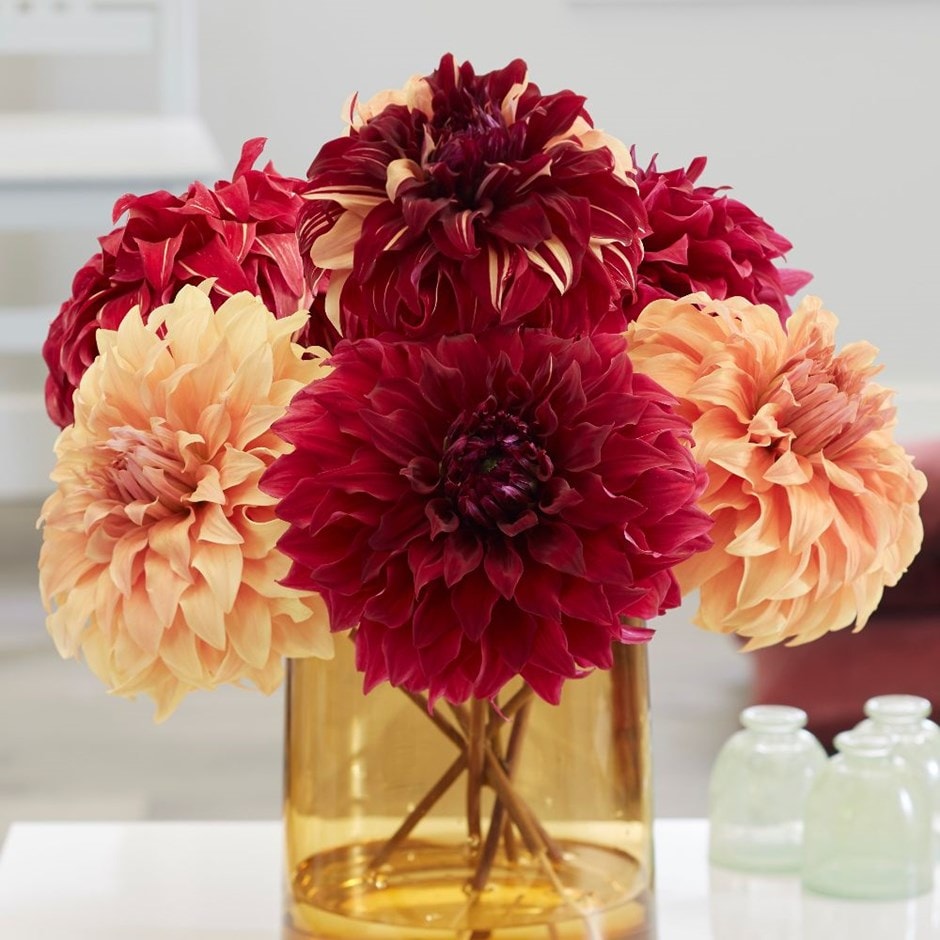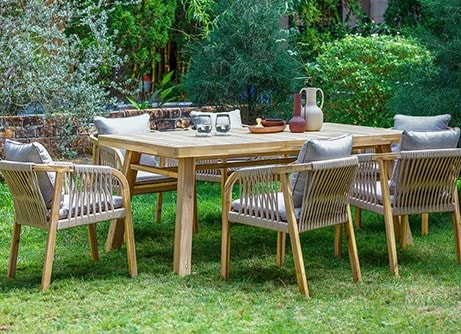
A magnificent collection of incredible dahlias with some of the largest blooms available, all with an element of colour transitioning over the life of each flower. Delicate pinkish-orange provides a foil for the combined opulence of the bi-coloured maroon and peach, underpinned by the decadent maroon-red of the ever-popular ‘Spartacus’.
How to care for Giant dinnerplate dahlia collection:
Dahlia tubers can be planted outside after frost, or started off in pots under glass in late winter to early spring. Plant them horizontally approximately 12cm deep, making sure the ‘eyes’ are uppermost. Allow enough room between each tuber so the plants can grow and spread to their full size without being overcrowded. While in growth, provide a high-nitrogen liquid feed each week in June, then a high-potash fertiliser each week from July to September. Stake with canes or brushwood if it becomes necessary. In mild areas, leave them in situ over winter, but protect the crown with a generous layer of dry mulch. In colder areas, carefully lift and clean the tubers once the first frosts have blackened the foliage and allow them to dry naturally indoors. Then place the dry tubers in a shallow tray, just covered with slightly moist potting compost, sand or vermiculite and store in a frost-free place until planting out again.
What's included:
In each collection you will receive one tuber of each of the following cultivars:
- Dahlia 'Spartacus': Large yellow-green buds top tall stems, and open to form giant-sized (up to 20cm across) flowers with broad, reflexed petals. Initially, their colouring is deep maroon, but as they mature, they fade to rich velvety red. Often the judges’ favourite at the shows, it looks very dramatic in the border or the vase. Grows to 1.2m.
- Dahlia 'Great Hercules': Magnificent heads up to 20cm across are packed with slightly ruffled, chunky 'petals', each with a pointed tip. When they first start to appear, these are initially bronze with just a hint of pink, but their colour quickly changes to soft orange as they unfurl fully. It looks stunning when teamed with rich plums, claret red or warm yellows. Grows to 1.2m.
- Dahlia 'Bohemian Spartacus': Forming giant-sized heads to 25cm across, each with a unique blend of variously streaked deep crimson and buttery yellow 'petals', this dinnerplate dahlia makes an impressive addition to the border or vase. Grows to 1.1m.
Flowering period:
- Jan
- Feb
- Mar
- Apr
- May
- Jun
- Jul
- Aug
- Sep
- Oct
- Nov
- Dec
Position:
Full sun
Rate of growth:
Fast-growing
Soil:
Moderately fertile, moist, well-drained soil
Hardiness:
Borderline hardy (will need protection in winter in colder areas)
-
Humans/Pets: Ornamental bulbs - not to be eaten
Product options

1 × collection | 3 tubers
£16.45
£5.48 each
available to order from winter
Unavailable

2 + 1 FREE collections | 9 tubers
£32.90
£3.66 each
available to order from winter
Unavailable
1
Delivery options (pick your preferred option at checkout)
Bulbs (only)£4.99








